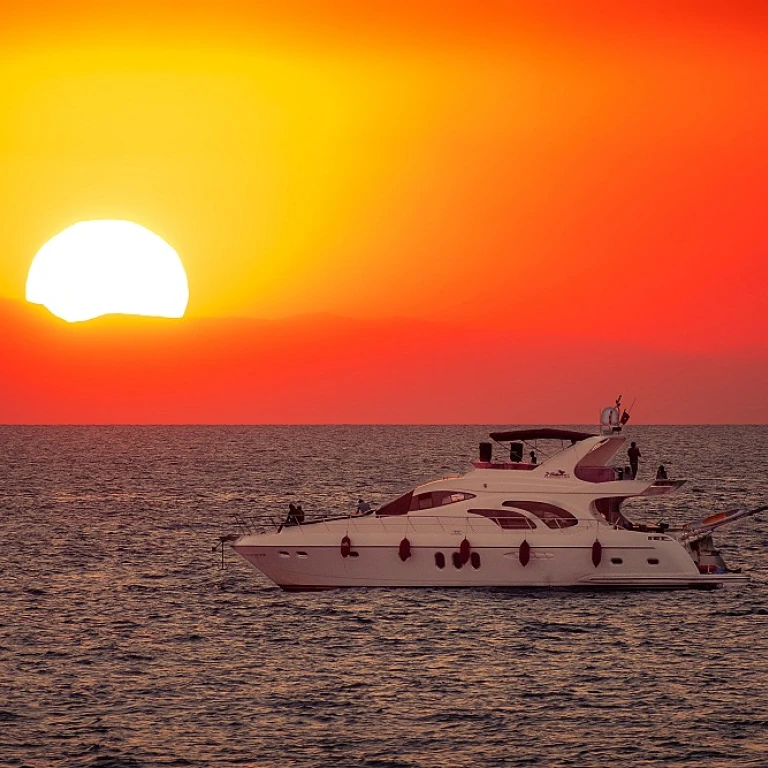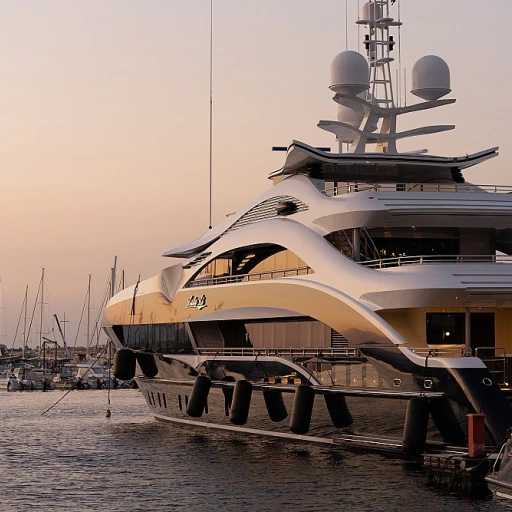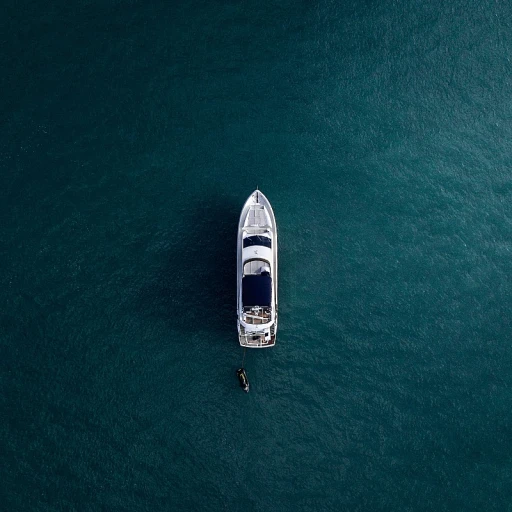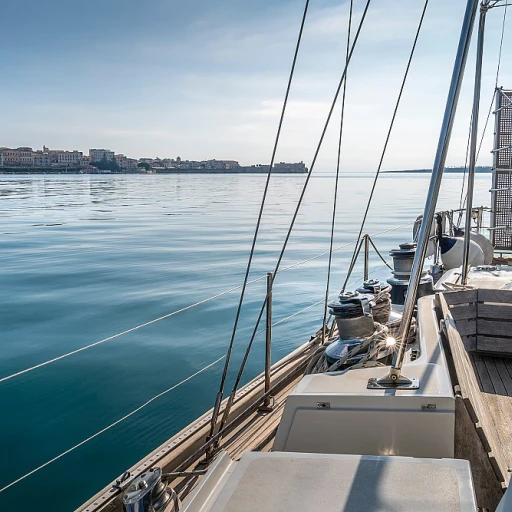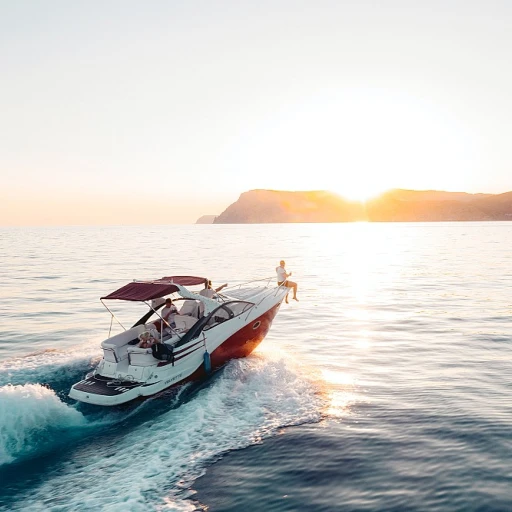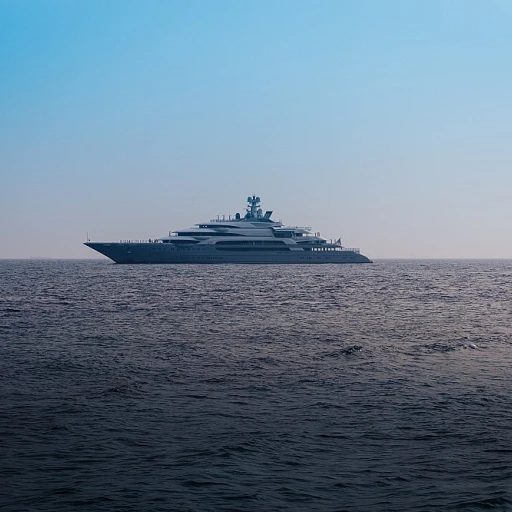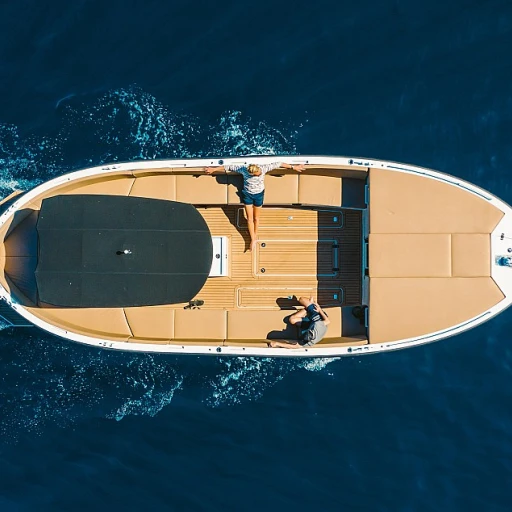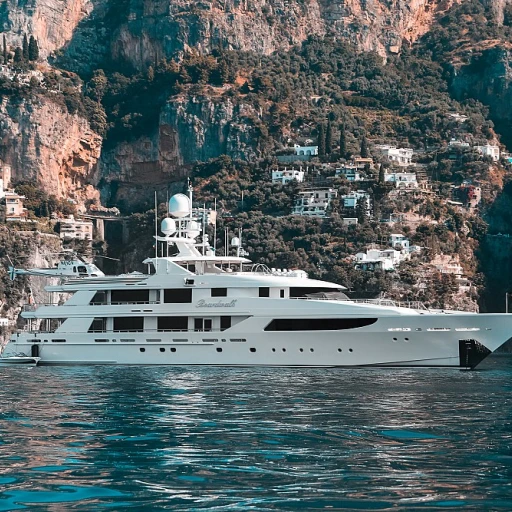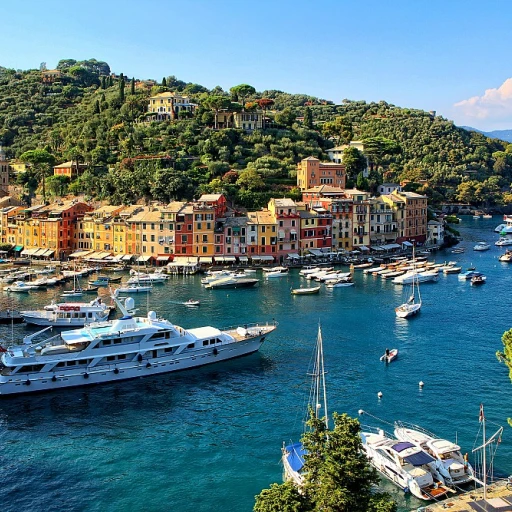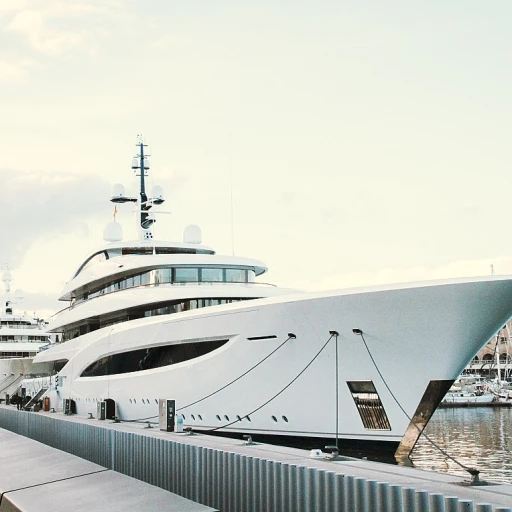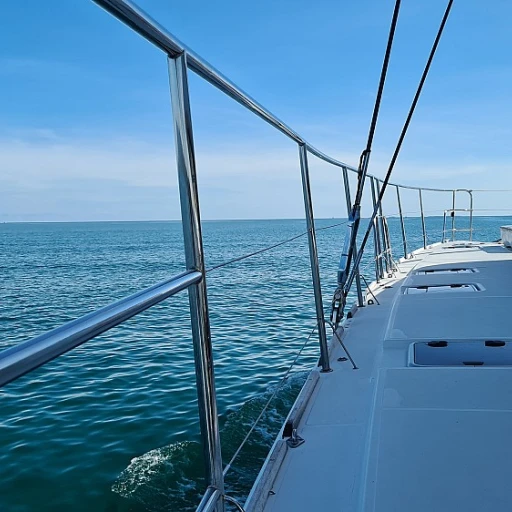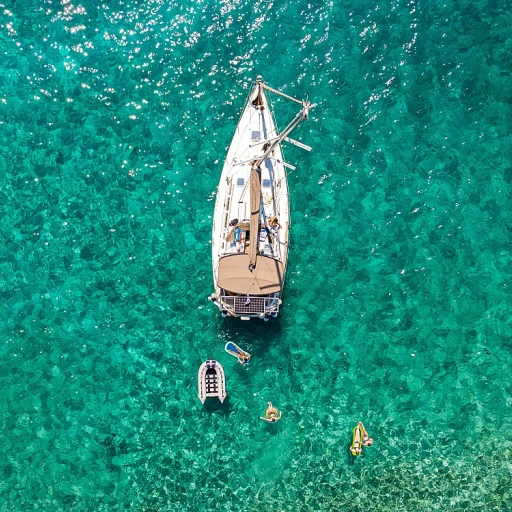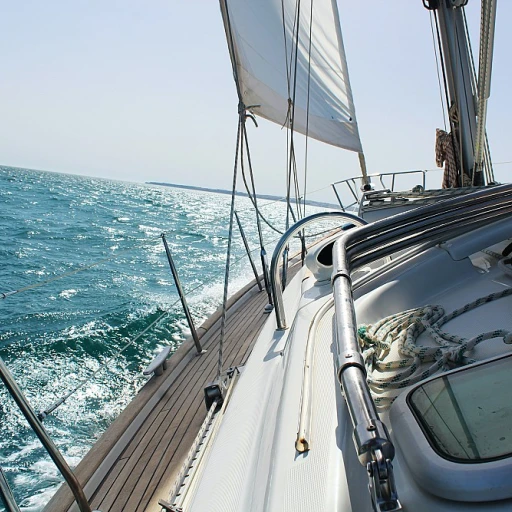
Understanding Winged Keels
Decoding the Mechanics of Winged Keels
The concept of winged keels has revolutionized yacht design, significantly influencing the performance dynamics of competitive sailing. Understanding the engineering intricacies of this innovative structure involves delving into its unique design that blends both functionality and aesthetic appeal. The winged keel consists of a keel winglet attached to the bottom of a fin keel, creating a distinctive hydrodynamic feature that offers numerous advantages, especially in terms of boat performance. Central to its effectiveness is the ability to reduce drag and manage the wetted surface area, which enhances sailing efficiency. The keels often extend across the hull, with wings that are designed to generate more side force. This not only facilitates better balance by keeping the yacht upright but also advances the center of gravity to optimize speed. In terms of design innovation, the winged keel introduces a shallow draft capability, which is a notable advantage for navigation in shoal draft waters. The addition of keel winglets helps minimize the turbulence created at the base of the fin keel, promoting a smoother sailing experience. Another aspect worth mentioning is how well the winged keels perform with deep fin configurations. The combination allows for a deeper draft without extending the overall depth, ensuring good performance while maintaining a sleek profile. This design mediates the complex relationship between drag and lift, maximizing the yacht's agility. For sailing enthusiasts and active members of the yacht community, exploring the benefits and challenges associated with winged keels is an ongoing journey towards optimizing yacht performance. Incorporating elements like a swing keel into the design offers further possibilities for innovation. As the world of yacht design continues to evolve, the adaptability and advantages of winged keels remain a focal point in discussions about enhancing overall sailing capabilities. Implementing such features could complement other boat accessories, enhancing your sailing experience in unprecedented ways. sourceThe Science of High Performance
Delving into the Mechanics of Performance Enhancement
Understanding how winged keels can elevate the performance of a yacht requires a dive into their unique design characteristics and mechanics. These keels are crafted not merely to hold the boat upright but to efficiently convert the forces of wind and water into momentum. Winged keels offer an intriguing combination of hydrodynamic principles and innovative engineering, making them a fascinating subject for yacht enthusiasts. Winged keels function by leveraging the lift generated by their cleverly designed shape. This wing-like structure, extending horizontally from the keel's base, reduces the yacht's draft while maintaining crucial stability. Its streamlined form helps in minimizing drag and enhancing speed, working in synergy with the hull and sails to propel the yacht forward with minimal resistance. One of the key elements in this performance enhancement is the reduction of wetted surface area. By minimizing the portion of the keel that comes into contact with water, winged keels effectively decrease drag. The fin keel, when equipped with wings, can thus offer the best of both worlds—sufficient side force without the burden of increased drag. While optimizing lift-to-drag ratios, these keels also contribute to a lower center of gravity, offering a more stable and comfortable ride, especially beneficial in competitive racing scenarios such as the America’s Cup. Not only do they aid in maintaining a shallow draft, but they also ensure excellent overall performance across varying water conditions. By combining the structural integrity of a traditional fin keel with the innovative advantages winged keel designs bring, the sailing experience is enhanced significantly. An in-depth understanding of how these components interact can make a substantial difference in navigating challenging waters smoothly. For those interested in mastering anchoring techniques for boats with such unique keel designs, exploring guides on diverse anchoring strategies could be beneficial. For those committed to experiencing the full potential of their vessels, knowledge of these designs can transform sailing from a passion into a true art form.Historical Evolution of Winged Keels
Tracing the Development of Winged Keels in Sailing
The evolution of the winged keel has been pivotal in shaping the course of modern yachting, revolutionizing how boats navigate the seas. This ingenious design, first brought to prominence during a significant international sailing competition, marked a transformative shift in nautical engineering. By enhancing performance and stability, the winged keel allowed vessels to harness greater speeds and navigate more efficiently, providing a competitive edge. Originally, traditional boats relied heavily on deep fin keels, which contributed to stability but at the cost of increased drag. As sailing technology advanced, designers tirelessly worked on minimizing wetted surface area, reducing drag and improving overall speed. The winged keel emerged as a game-changer, providing an intelligent way to maintain stability without compromising performance. Australia's dominance in competitive sailing owes much to its pioneering efforts in keel design. This small appendage on the bottom of the hull significantly improved the boat's ability to navigate through shallower waters, effectively reducing shoal draft. The innovation lay in its ability to generate side force that was necessary for maintaining a good angle of attack against the wind, all while allowing for a more shallow draft. A key advantage of winged keels over the conventional deep fin design is their optimization of the boat's center of gravity. By lowering the center of gravity, winged keels ensure better balance and superior control, especially in turbulent waters. Beyond competitive racing, the benefits of these keels extend into recreational sailing, where reduced swing keel tendencies and improved handling translate to enhanced boating experiences. For yacht enthusiasts and active members within the sailing community, the historical evolution of winged keels represents not just a technical advancement, but a narrative of innovation. This evolution challenges designers and sailors alike to continue pushing the boundaries of what is possible, epitomizing the relentless pursuit of excellence in yacht design. Explore more about enhancing your experience with innovative design elements in yacht construction at this article.Benefits for Modern Yachts
The Advantages of Winged Keels in Modern Yachts
Winged keels have become a significant asset in the world of modern yacht design. Their addition offers numerous benefits that can augment the performance of a vessel, which has become apparent over time.
First and foremost, the inclusion of a wing at the bottom of the keel, often compared to an airplane wing, serves to reduce drag and increase lift. This can improve the overall performance of the yacht by optimizing the flow of water around the hull.
Furthermore, they can help in lowering the center of gravity which offers better stability and allows the yacht to carry more sail without tipping over. This advantage is crucial during high-performance sailing competitions such as the America’s Cup, where every fraction of speed counts.
Another notable feature of winged keels is their ability to provide more lift with less surface area compared to conventional fin keels. The fin design is enhanced by the winglets, which create a shoal draft effect, allowing the yacht to sail in shallower waters without compromising stability and performance.
Modern designs have also considered the issue of wetted surface. With a reduced surface area in contact with water, the winged keel design can cut down on drag, thereby enhancing speed and efficiency. This is particularly beneficial for those out on long voyages or participating in competitive racing scenarios.
While traditional keel designs might be more straightforward, the innovative design of the winged keel means yachts can benefit from enhanced performance while maintaining good stability and maneuverability.
Challenges and Considerations
Balancing the Pros and Cons of Winged Keels
Incorporating a winged keel design in contemporary yacht performance involves navigating a complex landscape of pros and cons. One of the unique advantages winged keels offer is their ability to decrease the wetted surface area, thus reducing drag and enhancing the vessel's speed potential. The winged keel is designed to improve stability, allowing for a lower center of gravity, which can be particularly beneficial when sailing in varying sea conditions.
However, yachts equipped with wing keels do face several challenges. The innovative design requires precise engineering to achieve an optimal balance of performance and safety. The keel's increased surface area at the bottom means more complexity during the manufacturing process, demanding expertise and potentially raising costs.
Furthermore, a shallow draft configuration, attributed to the wing component, might influence the maneuverability of the yacht in tight harbor conditions or shallow waters. Designing a fin keel with winglets requires careful consideration of the boat's hull dynamics and sailing conditions to avoid scenarios where the keel encounters excessive side force.
One significant consideration is the maintenance aspect, as winged keels may incur higher insurance costs due to their intricate design. Over time, the advantage of reduced drag might be offset by the complexity of repairs and the potential for damage when docking or grounding.
Ultimately, for active members of the yachting community considering winged keel designs, careful evaluation of both the benefits and challenges is essential. By weighing these factors, sailing enthusiasts can determine whether the incorporation of such design elements aligns with their sailing needs and expectations in pursuit of high performance on the water.
Future Trends in Yacht Design
Innovations Steering the Future of Yacht Design
The yacht industry is on the brink of a transformative era, driven by technological advancements and evolving design philosophies. As we look to the future, several trends are emerging that promise to redefine yacht performance and efficiency.
Integration of Advanced Materials
One of the most significant trends is the use of advanced materials. Lightweight composites and alloys are increasingly being used to reduce the overall weight of the boat, which in turn enhances speed and fuel efficiency. These materials also contribute to a lower center of gravity, improving stability and performance.
Hydrodynamic Innovations
Hydrodynamics continues to be a focal point in yacht design. The development of more efficient hull shapes and keels, including the winged keel, is aimed at minimizing drag and maximizing lift. This not only improves speed but also enhances maneuverability, making it easier to navigate in various water conditions.
Emphasis on Sustainability
Sustainability is becoming a core consideration in yacht design. Designers are exploring eco-friendly technologies, such as solar panels and hybrid propulsion systems, to reduce the environmental impact of yachting. This shift is not only beneficial for the planet but also aligns with the growing demand from environmentally conscious consumers.
Customization and Personalization
As yacht owners seek unique experiences, customization and personalization are gaining traction. From bespoke interiors to tailored hull designs, the ability to customize a yacht to specific preferences is becoming a key selling point. This trend is supported by advancements in design software and manufacturing techniques.
Technological Integration
Technology integration is another area where significant advancements are being made. Smart systems that monitor and optimize performance in real-time are becoming standard. These systems can adjust the keel and fin configurations to suit different sailing conditions, ensuring optimal performance at all times.
Conclusion
The future of yacht design is bright, with innovations that promise to enhance performance, efficiency, and sustainability. As these trends continue to evolve, they will undoubtedly shape the next generation of yachts, offering exciting possibilities for both designers and enthusiasts alike.

